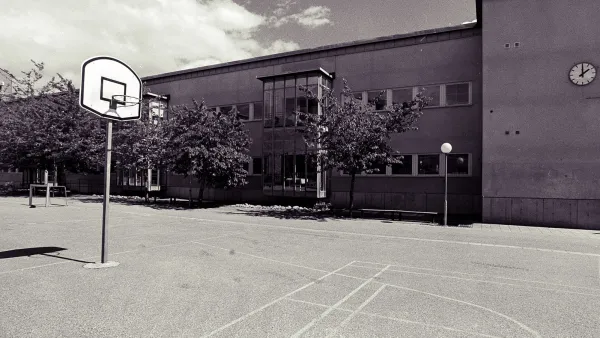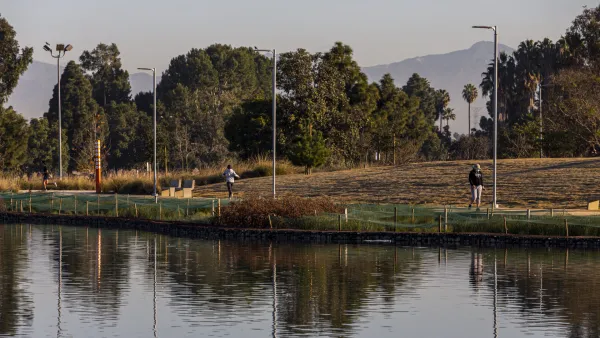While standardized metrics for determining the number of and place for city parks cannot replace more fine grain analysis, they can be useful tools. Park planner Clement Lau writes about five park-need metrics, including a couple of the newest.

Standardized park planning metrics that prescribe, for example, x acres of park per 1,000 residents, have a bad rap. However, planners cannot rely solely on subjective input. Standardized metrics are an invaluable tool for planners when not blindly implemented. Park planner Clement Lau reviews five valuable metrics, including a couple of the newest, which work best when integrated with other metrics and more fine grain analysis. Excerpts of his review are as follows:
Park Acres per 1,000 Residents
This is a commonly used indicator of the amount of parkland available in a given area.
. . .
Park Accessibility
This metric is evaluated by using a Geographic Information System (GIS) and Census data to determine the percentage of households that are within walking distance from a park.
. . .
Park Pressure
Park pressure is a lesser known, but helpful metric that refers to the potential demand on a park, assuming that the residents in a “parkshed” use the park closest to them.
. . .
Quantity and Variety of Park Amenities
It should be obvious that not all parks are created equal and that the quantity and variety of amenities vary widely.
. . .
Condition of Park Amenities
The condition or quality of park amenities is a key measure of park adequacy. . . . The condition of this infrastructure and park amenities may be rated as “Good,” “Fair,” or “Poor” or in any other way that allows a city to determine its deferred maintenance and park improvement needs in terms of costs.
Lau goes on to explain in more detail how each of these metrics should be used and integrated with other factors.
FULL STORY: How Should Park Needs be Measured?

Analysis: Cybertruck Fatality Rate Far Exceeds That of Ford Pinto
The Tesla Cybertruck was recalled seven times last year.

National Parks Layoffs Will Cause Communities to Lose Billions
Thousands of essential park workers were laid off this week, just before the busy spring break season.

Retro-silient?: America’s First “Eco-burb,” The Woodlands Turns 50
A master-planned community north of Houston offers lessons on green infrastructure and resilient design, but falls short of its founder’s lofty affordability and walkability goals.

Test News Post 1
This is a summary

Analysis: Cybertruck Fatality Rate Far Exceeds That of Ford Pinto
The Tesla Cybertruck was recalled seven times last year.

Test News Headline 46
Test for the image on the front page.
Urban Design for Planners 1: Software Tools
This six-course series explores essential urban design concepts using open source software and equips planners with the tools they need to participate fully in the urban design process.
Planning for Universal Design
Learn the tools for implementing Universal Design in planning regulations.
EMC Planning Group, Inc.
Planetizen
Planetizen
Mpact (formerly Rail~Volution)
Great Falls Development Authority, Inc.
HUDs Office of Policy Development and Research
NYU Wagner Graduate School of Public Service




























